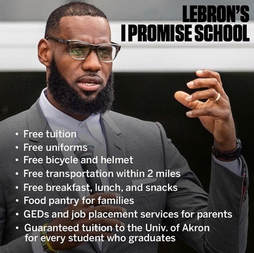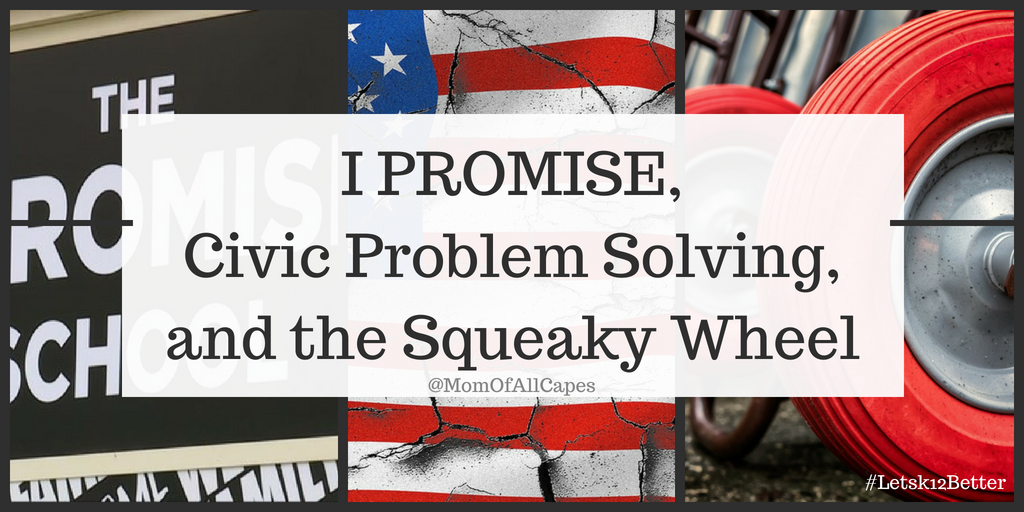|
We’ve all heard this before, “the squeaky wheel gets the oil”; the loudest most pressing issues are often resolved first. But when we look at our most pressing national issues, it seems as if we’ve either run out of oil or we actually have way more wheels than we thought we did. With limited time and resources, can we expect our government to efficiently address every local and national problem with the care and proficiency that is required? What role do citizens play in solving local and national civic problems? What can we learn from celebrities and private companies that have stepped in to addressed niche community problems and interests? Celebrities and private companies use their resources and influence to enact almost instantaneous monumental change, but regular citizens have the capacity to do the same. The first step toward solving civic problems is a comprehensive understanding of the role of government and the processes by which citizens can make change. Individual citizens can create legal, viable solutions for their communities when they understand how the system should work, and can pinpoint where the breakdown in the system has occurred. A civic problem-solver is therefore a citizen, or group of citizens, that propels their community forward because they understand their power, can engage others on a variety of levels, and puts their time, energy, and effort toward their cause. How do we teach our future citizens (students) about civic engagement? In order for regular citizens to solve problems, they must be engaged in their community in some capacity; because when citizens are engaged, they are observing and experiencing the pain points unique to their way of life. The dilemma however is that there isn’t one definition of engaged citizenship. Informed voting, paying taxes, or being civil to people with different views, is just as much a part of engaged citizenship as responsible media consumption and media literacy, civic activism, or feeding the hungry. The variety of ways in which citizens engage with and in their community then begs the question if civic engagement is solely reliant on institutions to solve our problems or is civic engagement a charge that each citizen is responsible for? And when we drill down even further, this means that civic problem solving can be exercised through a variety of acceptable methodologies. How can parents, teachers, and nonprofits empower and inspire future civic problem solvers? As we define civic engagement, we must remember that the most important part of the definition is the engagement - being committed to, or active in, our community. This requires individuals to invest in themselves and those around them. Anything from social unrest movements to Elon Musk’s failed Iron Man moment, highlight how individuals and groups become supercharged to find their own solutions to civic annoyances and problems too large, too niche, or too radical for the current government processes. The most memorable civic problem solving often happens where politics meets social empathy.  When the wheels are too squeaky to be ignored, what responsibilities do citizens have to the community and to each other? LeBron James’ IPROMISE School format is the result of successful civic problem solving. James, a former Akron resident, witnessed and experienced life in a community where students and families are in desperate need of assistance. Blending public education with a charter, non profit arm, James essentially created a community school with the purpose of providing families the opportunity to gain access to the knowledge necessary to uplift themselves from poverty and the conditions of a failed learning environment. His solution has forced conservatives and progressives to reevaluate the role that schools play in students’ lives. This could not have come at a more interesting time in K12 education. There’s no question that K12 education is one of the squeakiest wheels in the United States today. With the spike in teachers’ strikes during the 2017-18 school year; the continued outrage over any of Betsy Devos’ policies; the recent Supreme Court ruling on “Access to Literacy”; and the increased fear for student and teacher safety, the education system highlights just how varied problems facing our segments of society truly are. When we layer these macro level problems with issues like generational poverty, crime infested neighborhoods, and misallocation of tax dollars and resources, we begin to see how civic engagement decays. Citizens lose interest when they keep trying and are met with continued failure or willful ignorance. When a political system breaks down, who is best positioned to solve the hyper-local civic problems facing these communities? This isn’t to say that we throw away government, this is to say that we should look more closely to the embarrassing social moments and enlightening civic outcomes that occur when failed communities find a way to thrive in spite of their circumstances. Once we see the solutions created by individuals in these communities, the next step would be for government and the broader populous to examine why and where the breakdown in process occurred for these individuals. Is this breakdown a trend elsewhere and if so, is this new civic solution viable and scalable for other communities to improve society at large? We don’t teach our students to think about politics this way. We don’t need to create civic saviors, we need to empower and encourage creative problem solving in civics. In civics, we teach about the structure of government and the execution of policies. We highlight the necessity of citizen voice for the approval to execute civic policies. We need to take it one step further. We must teach and model how citizens can tangibly solve problems in communities in a legal and efficient way, beyond voting. In order for our system of government to work for citizens well into the future, we must equip our students with the capacity to analyze policy and find areas where these policies fail small and large communities. In an age where we continue to hear more squeaky wheels, witness more problems, and experience a lack in viable solutions for everyday people, what is the role of the civic problem solver and how do we create more? Not everyone can, will, or should run for office; but grassroots solutions like food pantries, youth groups, and even high quality community schools, are prime examples of civic problem solving at its best. Empowering individuals with the tools necessary to develop and engineer legal, viable answers to local civic problems may be one of the most disruptive, and yet socially responsible, acts we as Americans could take. Read more about civics, civil discourse, and improving K12 education here:
0 Comments
Your comment will be posted after it is approved.
Leave a Reply. |
I'm a former teacher and former college athlete, currently working to make life more equitable for all people. My mission is to get parents to partner with their child's teacher.
|

